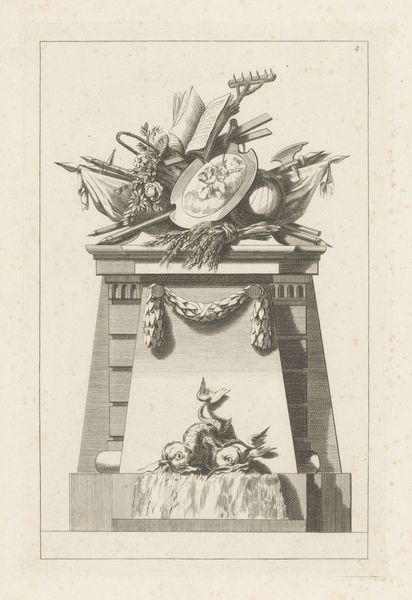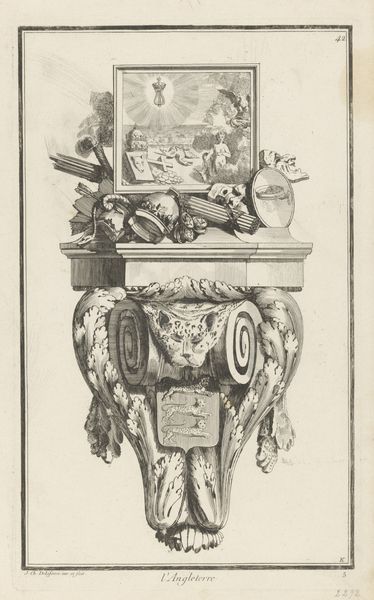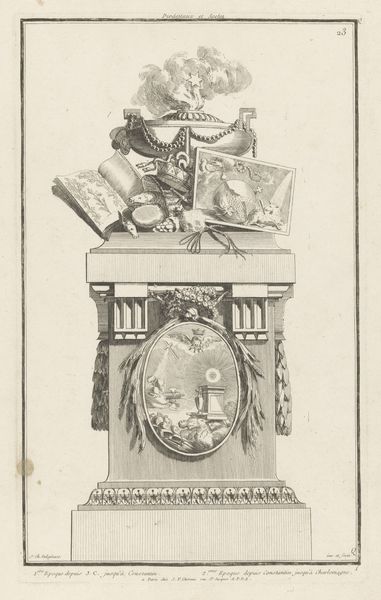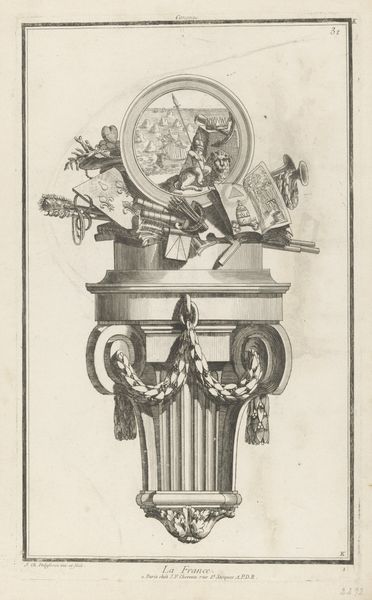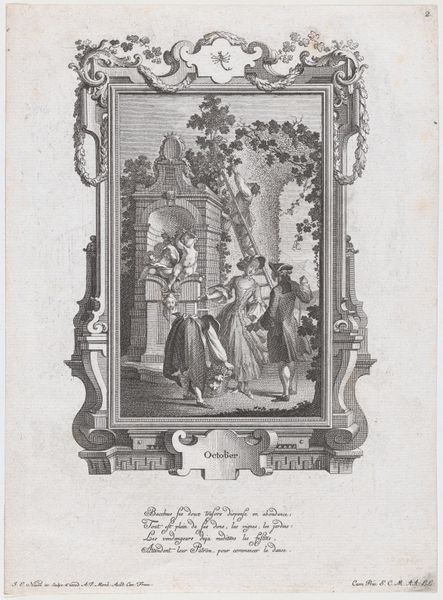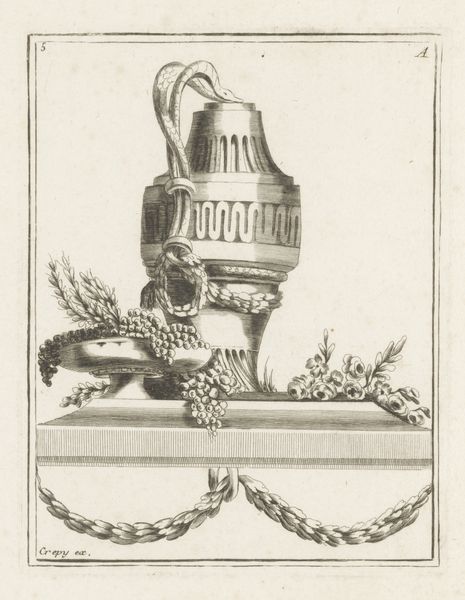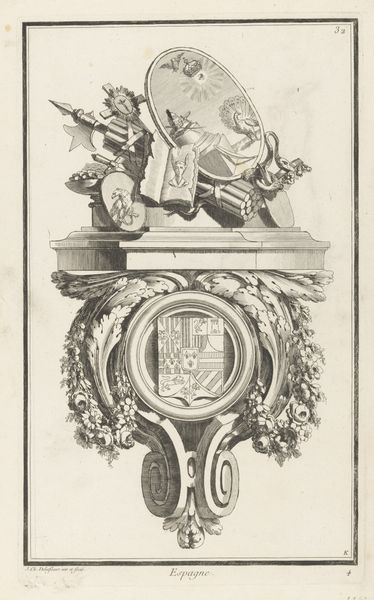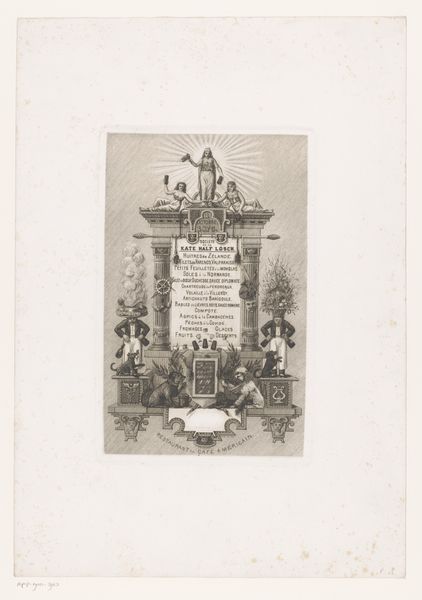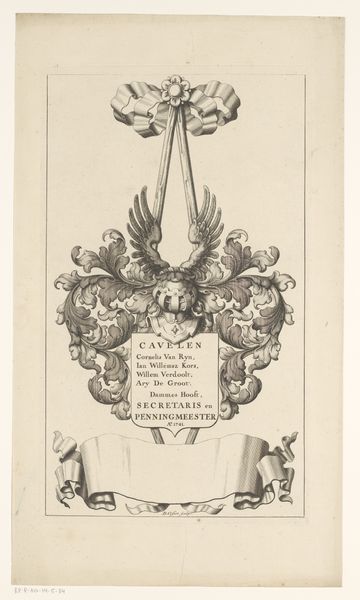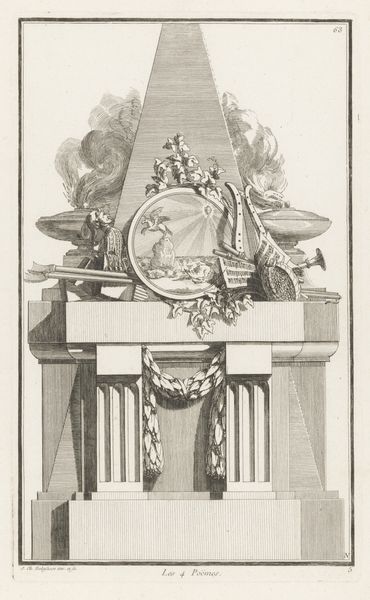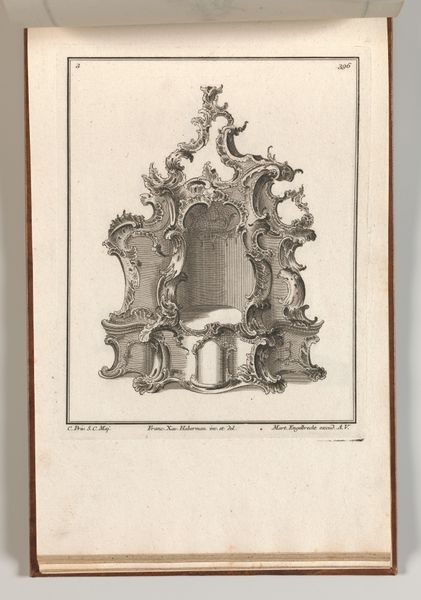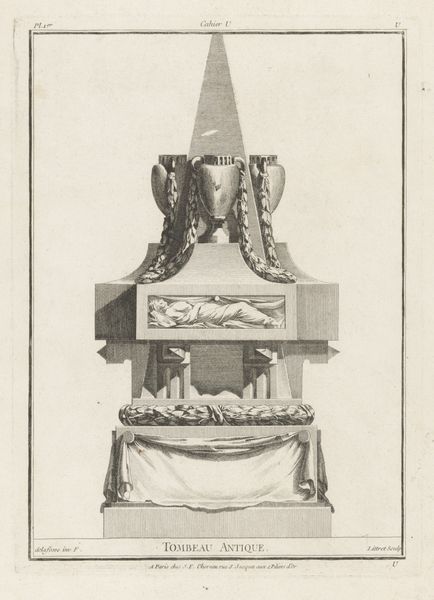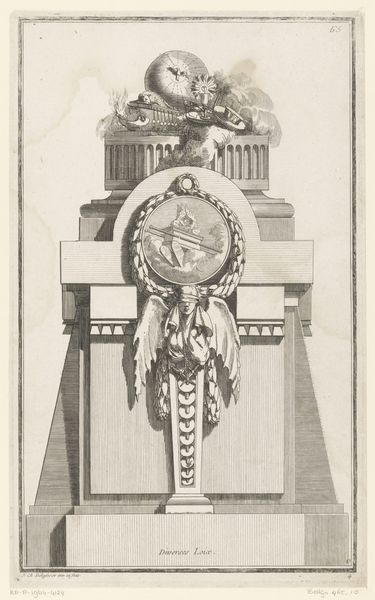
Dimensions: height 384 mm, width 234 mm
Copyright: Rijks Museum: Open Domain
Curator: Looking at "Herfst en winter", or "Autumn and Winter," an engraving created by Jean Charles Delafosse between 1768 and 1771, what strikes you first? Editor: Well, I immediately notice the chill. Not just in the subject matter implied by the title, but in the rather stark, almost skeletal architectural structure presented here. The cold stone seems to almost leach the warmth from the surrounding symbolic elements. Curator: Precisely! Delafosse, working in a period of decorative arts and leaning towards Neoclassicism, presents us with more than just a simple representation of seasons. Let’s think about the making process. This is an engraving, a print, created by carving into a plate – the laborious and considered removal of material to then reproduce this image repeatedly. Editor: And it is fascinating how those precisely etched lines combine to evoke familiar emblems. We have traditional autumn symbols: grapes overflowing from a vase, evoking the harvest. But consider how those shapes are themselves situated atop, or perhaps supported by, a broken musical instrument – suggesting the end of song, of summer joy. Curator: The instruments as manufactured commodities certainly add to the dialogue of production and purpose that echoes in this era of neoclassicism. The broken instrument speaks to obsolescence and a society grappling with progress. Editor: Absolutely, progress visualized as seasons but laden with symbolic weight that speaks of cycles and the constant turning wheel. Observe also the small figures at the base— frozen and formal in pose, almost as figurines— witnessing something, pointing outwards perhaps at the changing seasons we can't see? Curator: Their scale suggests a power dynamic as the architecture looms over them. But there's a consumption implied. They’re observers, perhaps consumers of this spectacle. It makes me think about the exchange of ideas and artistry within social systems. Editor: Exactly. The engraving becomes less a decoration and more of an artifact that, across the centuries, remains capable of layering both production and seasonal symbols that represent not just natural, but historical shifts. Curator: And now looking at it this way, I’m seeing that chill not as sterile but alive. A reminder that making and doing also evolves us season after season. Editor: For me, each mark deepens the feeling of continuity, even as things demonstrably break down – the harvest yields to winter and we are reminded of nature’s continuous renewal.
Comments
No comments
Be the first to comment and join the conversation on the ultimate creative platform.
